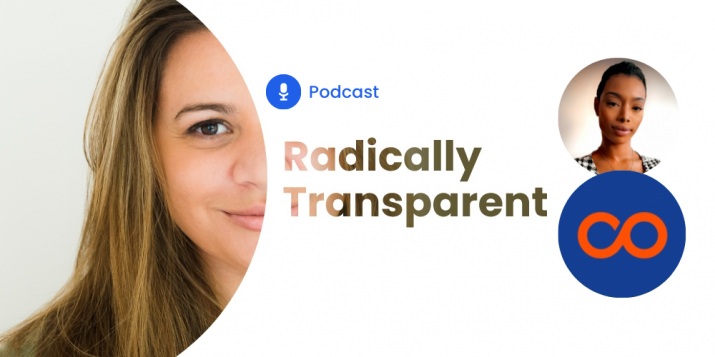
Qualitative vs Quantitative marketing intelligence: Marketers need both
The evolution of content marketing intelligence
As B2B marketers, getting the most out of your campaigns requires understanding what’s happening and why. This is where content marketing intelligence comes in. It’s all about gathering data from various sources, like social media, email nurture programs, or corporate PRs, and using that data to understand what are competitors are saying and why.
But here’s the thing: There’s no one-size-fits-all approach. The two main types of intelligence you’ll come across are quantitative and qualitative. Quantitative intelligence is all about numbers and metrics that help you track performance. Qualitative intelligence, however, digs deeper into the reasons behind people’s actions. Both have value, and when used together, they give you a fuller picture of your marketing landscape.
The concept of quantitative marketing intelligence
Quantitative marketing intelligence focuses on measurable metrics, like the number of clicks, conversions, or engagements, that help you see whether your marketing efforts are hitting the mark. This type of intelligence helps evaluate your campaigns and is excellent for spotting trends over time.
Some standard methods of collecting quantitative data include:
- Surveys: You ask your audience questions and get a numerical response. This helps you gauge preferences, satisfaction, and even brand loyalty.
- Web analytics: Tools like Google Analytics can tell you how many people are visiting your site, where they’re coming from, and what actions they take there.
- Net Promoter Score (NPS): This metric is a simple measure of customer loyalty. It asks how likely customers are to recommend your product or service to others.
- Social media metrics: From likes to shares to comments, social media provides plenty of complex numbers showing how your content performs.
The main benefit of quantitative intelligence is that it’s scalable and easy to analyze across large datasets. If you want to know if a specific type of post is generating a lot of clicks or if your latest campaign is resonating with your audience, this type of data will tell you exactly that. It’s objective and helps you identify what’s working and what’s not in real time.
But while it’s great for seeing the what and when, it doesn’t give you the why. You can track clicks and conversions, but it won’t explain why people clicked or engaged.
Recommended for further reading
Explaining qualitative marketing intelligence
If you want to understand the why behind customer behavior, qualitative marketing intelligence is what you need. This approach digs into emotions, motivations, and perceptions, which are harder to measure with numbers alone.
Qualitative data methods:
- Content analysis: Reviewing Blogs, E-Books, Guides, PR announcements, and Emails published by competitors gives you insight into their marketing campaigns, messaging, and storytelling.
- Interviews: These one-on-one conversations with customers or potential customers offer deep insights into their thoughts, feelings, and needs.
- Focus groups: A small group of people discusses their thoughts about your product, service, or brand. This helps you uncover themes and patterns in their opinions.
- Social media sentiment analysis: By looking at the language people use in their social media posts or comments, you can get a sense of how they feel about your brand, positive, negative, or neutral.
The value of qualitative intelligence is that it helps you better understand the topics and issues in your market. It provides context around the numbers you see in quantitative data.
It will give you a better picture of why people engage with your content. It’s the perfect way to understand news, issues, pain points, and preferences. For example, you can see that many people are downloading your guide about Employee Advocacy for Large Enterprises, and you realize there was news about company X buying company Y, and the impact on the market.
The downside is that it’s more subjective and can take longer to collect and analyze. Plus, because it’s often based on smaller sample sizes, it may not always be as easily generalizable as quantitative data.
Comparative analysis: quantitative vs qualitative
Now that we’ve broken down both types of marketing intelligence, let’s compare them side by side. This should give you a clearer idea of when to use each one and how they complement each other:
| Aspect | Quantitative Intelligence | Qualitative Intelligence |
| Data Type | Numbers, metrics, and statistics | Descriptive data, feedback, and sentiment |
| Methods | Surveys, web analytics, NPS scores, and social media metrics | Interviews, focus groups, sentiment analysis, content analysis, summaries |
| Benefits | Objectivity, scalability, trend identification, and measurable ROI | Depth of insight, context, understanding motivations, storytelling |
| Limitations | Doesn’t explain the “why” behind actions, surface-level insights | Subjectivity is more complex to scale and more time-consuming |
| Best For | Tracking performance, measuring impact, and identifying trends | Understanding motivations, refining messaging, and exploring customer pain points |
As you can see, quantitative intelligence is excellent for monitoring performance and identifying patterns. It’s ideal for answering questions like,
- How many people clicked on my post? or
- How much traffic did my website get this month? Or
- How many people signed up for our webinar.
Qualitative intelligence, on the other hand, is better for answering questions like, “Why did people engage with my post?” or “What do my customers care about?” It’s about understanding customer behavior and refining your marketing messages.
Competitor content analysis is based on qualitative methods
One area where qualitative intelligence shines is in analyzing competitor content. Knowing what and how much your competitors publish and write is meaningful, but understanding the tone they’re using and why they are saying what they are saying can give you an edge.
By diving into qualitative intelligence, you can uncover things like:
- Brand messaging: How are your competitors talking about their products? Are they using an emotional appeal or focusing on features? Are they emphasizing customer pain points or promoting solutions?
- Tone and style: Does your competitor’s content appear authoritative, casual, or friendly? What kind of emotions does it evoke in its audience?
- Content gaps: Are there any topics your competitors aren’t addressing that you could capitalize on? Maybe they’re not focusing on a particular target segment or missing a specific product or service aspect.
This is where tools like Oktopost’s marketing intelligence platform come in handy. They help you analyze qualitative and quantitative data, clearly showing what your competitors are doing right—and where you can improve.
Merging the intelligence from qualitative and quantitative approaches
While both competitive analysis types are valuable, combining them adds extra value. When used together, quantitative and qualitative intelligence give you a fuller, more actionable view of your marketing landscape.
Here’s how you can combine them:
- Scenario 1: Competitor Content Strategy
Your qualitative analysis shows that a competitor is targeting a new audience segment. They have taken on a new influencer and are writing content about this new segment. Quantitative analysis could help you track how many new pieces of content were published for this new audience within the last few months, how many mentions they got for the new hashtags, how many posts they had for this new audience, what was the share of voice on this topic and was there more positive than negative sentiment to a particular influencer. - Scenario 2: Identifying a trend
Quantitative intelligence shows a spike in engagement around sustainability topics. Qualitative insights can help us understand why this topic is making an impact, perhaps it’s tied to a broader topic in the news right now, or to specific customer concerns.
Using both approaches together allows you to spot trends early, adjust your strategy, and target the right audience with the right message.
Best practices for integrating both types of intelligence include:
- Aligning qualitative with quantitative insights: Look at quantitative metrics to see what’s working, and use qualitative data to explain why.
- Constant feedback loops: Continuously gathering qualitative and quantitative data to refine your work plan will keep your marketing activities creative, differentiated, and more impactful.
Making informed decisions with comprehensive marketing intelligence
When it comes down to it, marketing intelligence is about understanding what’s working in your campaigns, why it’s working, and where you can improve. Quantitative intelligence will give you the numbers and trends, while qualitative intelligence helps you understand the emotions, motivations, and why the campaign or its messaging worked.
By integrating both approaches, you can become a better marketer, increase the impact of your marketing efforts, and drive business success. Platforms like Oktopost Social Listening and Marketing Intelligence make it easier to collect and analyze both types of intelligence, helping you refine your marketing strategy and differentiate yourself and your content.


